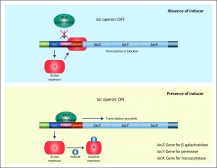Definition
noun
A median fissure separating the two hemispheres of the vertebrate brain
Supplement
The cerebrum of vertebrates, including humans, is divided by two hemispheres referred to as left and right cerebral hemispheres. A fissure exists between the two hemispheres and is referred to as median longitudinal fissure.
The median longitudinal fissure is a deep groove in between the two hemispheres. It is also called cerebral fissure or interhemispheric fissure. It is also referred to as simply longitudinal fissure. The falx celebri (or cerebral fals), a fold of the dura mater, covers it. Beneath this fissure is a corpus callosum. The corpus callosum (also called callosal commissure) is a bundle of commissural fibers that spans part of the median longitudinal fissure, and allows communication between the left and the right cerebral hemispheres.
The median longitudinal fissure should not be confused with another major groove in the brain, the central sulcus. The central sulcus is a fold in the cerebral cortex in vertebrate brain. It separates the parietal lobe from the frontal lobe and the primary motor cortex from the primary somatosensory cortex. The central sulcus is also called the central fissure or the fissure of Rolando.
Synonym(s):
- longitudinal fissure
- cerebral fissure
- interhemispheric fissure
See also:







